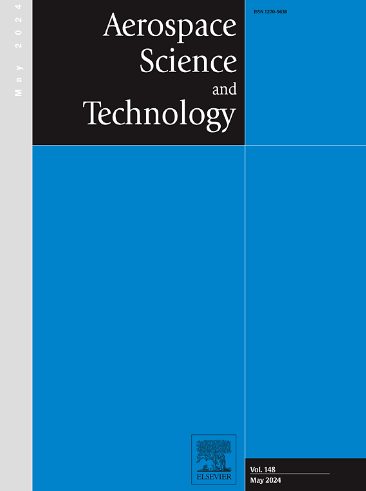Multi-physical fields prediction model for turbine cascades based on physical information neural networks
IF 5
1区 工程技术
Q1 ENGINEERING, AEROSPACE
引用次数: 0
Abstract
The flow field information within the cascade is crucial for turbine design. Currently, the physical field data in the cascade is mostly obtained through numerical simulation, which is accurate but time-consuming. To enable fast and accurate prediction of the physical fields within the cascade, this study proposes a Physics-Informed Fourier Neural Operator (PIFNO) model. Compared to pure data-driven surrogate models, PIFNO incorporates partial physical information into the modeling process through a physics-head correction approach during training, which not only improves prediction accuracy but also enhances model interpretability to some extent. To expand the applicability of PIFNO, this paper proposes a Transfer Learning-based multi-physics fields prediction model (TL-PIFNO) that can predict the physical fields within the cascade under different operating conditions using limited training data. Experiments show that PIFNO has relative errors within 2% for pressure and temperature field prediction, and maximum relative errors within 5% for velocity field prediction. TL-PIFNO can achieve similar accuracy to PIFNO using only 3/10 of the data volume and 1/10 of the training time, showing great potential for engineering applications.
基于物理信息神经网络的水轮机级联多物理场预测模型
级联内的流场信息对涡轮机的设计至关重要。目前,级联内的物理场数据大多通过数值模拟获得,虽然准确,但耗时较长。为了快速准确地预测级联内的物理场,本研究提出了物理信息傅立叶神经算子(PIFNO)模型。与纯数据驱动的代用模型相比,PIFNO 在训练过程中通过物理头校正方法将部分物理信息纳入建模过程,不仅提高了预测精度,还在一定程度上增强了模型的可解释性。为了扩大 PIFNO 的应用范围,本文提出了基于迁移学习的多物理场预测模型(TL-PIFNO),该模型可以利用有限的训练数据预测不同运行条件下级联内的物理场。实验表明,PIFNO 对压力场和温度场预测的相对误差在 2% 以内,对速度场预测的最大相对误差在 5% 以内。TL-PIFNO 只需 3/10 的数据量和 1/10 的训练时间,就能达到与 PIFNO 类似的精度,显示出巨大的工程应用潜力。
本文章由计算机程序翻译,如有差异,请以英文原文为准。
求助全文
约1分钟内获得全文
求助全文
来源期刊

Aerospace Science and Technology
工程技术-工程:宇航
CiteScore
10.30
自引率
28.60%
发文量
654
审稿时长
54 days
期刊介绍:
Aerospace Science and Technology publishes articles of outstanding scientific quality. Each article is reviewed by two referees. The journal welcomes papers from a wide range of countries. This journal publishes original papers, review articles and short communications related to all fields of aerospace research, fundamental and applied, potential applications of which are clearly related to:
• The design and the manufacture of aircraft, helicopters, missiles, launchers and satellites
• The control of their environment
• The study of various systems they are involved in, as supports or as targets.
Authors are invited to submit papers on new advances in the following topics to aerospace applications:
• Fluid dynamics
• Energetics and propulsion
• Materials and structures
• Flight mechanics
• Navigation, guidance and control
• Acoustics
• Optics
• Electromagnetism and radar
• Signal and image processing
• Information processing
• Data fusion
• Decision aid
• Human behaviour
• Robotics and intelligent systems
• Complex system engineering.
Etc.
 求助内容:
求助内容: 应助结果提醒方式:
应助结果提醒方式:


